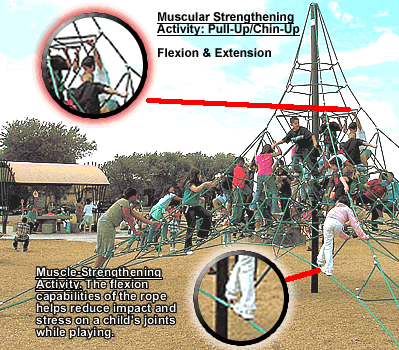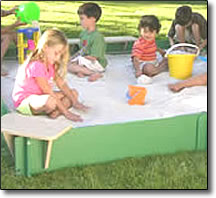“To maximize physical activity in children, playgrounds should be designed with ample and diverse play equipment.” — Tulane University’s School of Public Health and Tropical Medicine.
Playground equipment brings kids hours of fun and lets them burn off s team. But it also provides a valuable form of low-intensity physical exercise that strengthens muscles and bones.
team. But it also provides a valuable form of low-intensity physical exercise that strengthens muscles and bones.
The President’s Council on Physical Fitness recommends that children have at least
1 hour of physical activity each day. There are 3 types of exercise that are encouraged for growing children: aerobic activity, muscle-strengthening activity, and bone-strengthening activity.
- Aerobic activities are those which cause young people to move their large muscles in a rhythmical pattern. Running, hopping, skipping, and jumping rope are all examples of aerobic activities. An action can be very brief (a single jump, for example) yet still be considered aerobic activity.
- Muscle-strengthening activities make muscles do more work than usual during activities of daily life. This is called “overload,” and it strengthens the muscles. Muscle-strengthening activities can be unstructured and a part of play, such as playing on playground equipment and climbing trees.
- Bone-strengthening activities produce a force on the bones that promotes bone growth and strength. This force is commonly produced by impact with the ground. Running, jumping rope, basketball, tennis, and hopscotch are all examples of bone strengthening activities. As these examples illustrate, bone-strengthening activites can also be aerobic and muscle-strengthening at the same time.
 Generally, there are two types of muscular movements that may be particularly good for children and their growing bodies:
Generally, there are two types of muscular movements that may be particularly good for children and their growing bodies:
- Flexion: a movement which moves the two ends of a jointed body part closer to each other.
- Extension: a movement which increases the angle between two body segments, or the return from flexion.
Even a basic activity like playing in a sandbox can help develop coordination and promote socialization skills.
